Discovering and enjoying classical music made easy with Apple’s dedicated app, Apple Music Classical
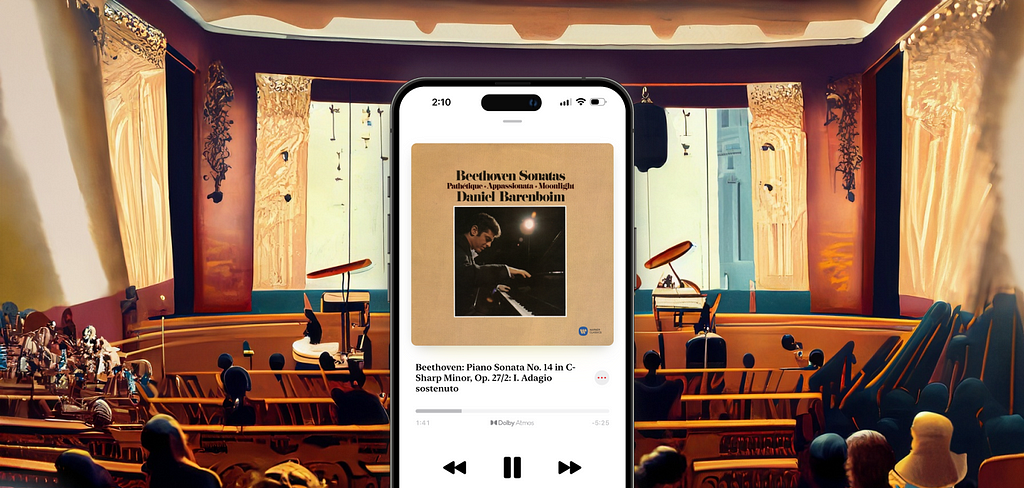
There’s a problem when it comes to searching and exploring classical music on music streaming services. Apple Music is not different, and Apple tried to solve this problem by launching a separate app! In this post, we will explore why and how Apple did it.
Searching and exploring classical music differs from pop music or any other modern genre. Modern music has fairly short titles, such as the song’s name, artist, album, and release year. For instance, ‘Blinding Lights’ by ‘The Weeknd,’ Album ‘After Hours,’ and release date ‘2020’.
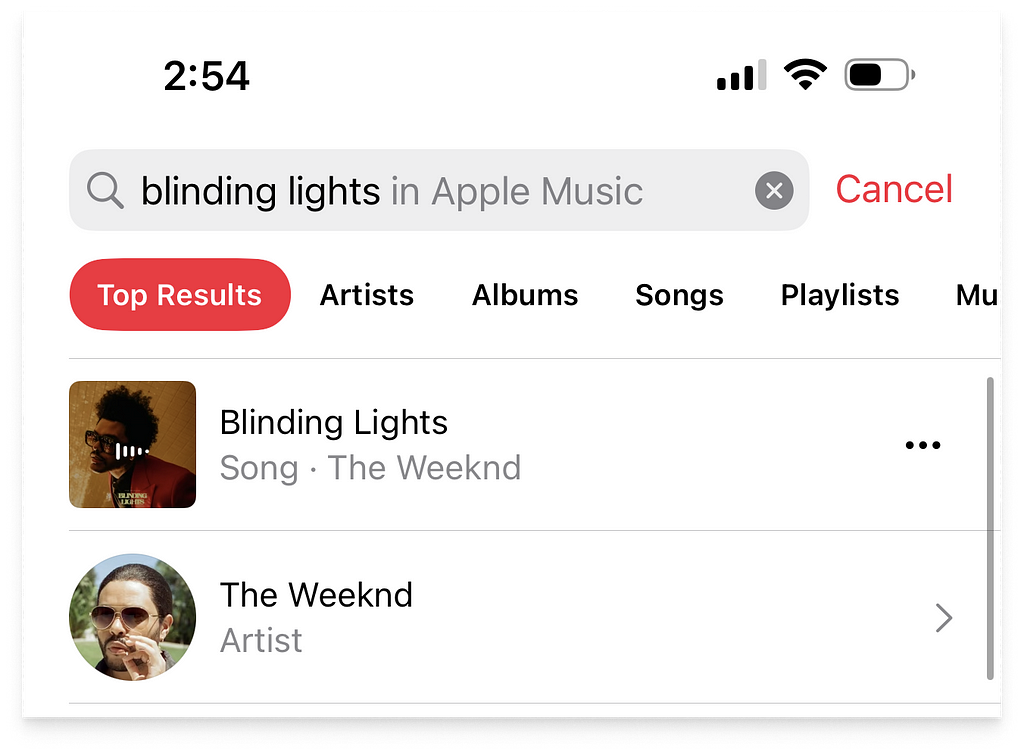
Convoluted naming conventions of classical music
Classical music is a complex and diverse genre that poses many challenges for music streaming services. One of the main challenges is the metadata or the information that describes each piece of music, e.g., Name, Composer, Artist, Symphony, Partita, Key, Opus no, Key signature, Period, etc.
For example, a full title of a classical piece could be something like “Piano Sonata №14 in C-sharp minor ‘Quasi una fantasia,’ Op. 27 №2 ‘Moonlight’: I. Adagio sostenuto” by Ludwig van Beethoven performed by Daniel Barenboim.

As you can see, this title contains information vital for classical music fans to search and identify a specific piece. However, searching for such titles in a music streaming service like Apple Music can be frustrating for several reasons —
- There might be many recordings of the same repertoire by different artists. For example, there are over 1000 versions of Beethoven’s famous “Moonlight Sonata” on Apple Music. They need to be organized so the users find the specific piece they are looking for.
- The categorization and organization of classical music are different compared to Pop, Rock music. Since classical music is usually organized by composer, composition type, period, etc., it requires different Information Architecture(IA).
- The search algorithm in Apple Music is not optimized for searching classical music. If you search for “Moonlight Sonata,” you might get results that include songs with “moonlight” or “sonata” in their titles or lyrics, but not necessarily the piece you are looking for.
These problems make the niche group of classic music lovers find, explore and enjoy the classical music of their favorite artists on Apple Music harder. This also limits their discovery of new pieces and artists they might like.
How Apple tried to solve the problem
Apple acquired the dedicated classical music streaming app Primephonic in 2021 with 5 million classic music titles. Later apple revamped the app and launched a standalone app named Apple Music Classical. The app is designed to make the experience of finding and exploring seamless and intuitive.
- It has a search engine that understands classical music metadata and queries. For example, search for “Beethoven Piano Sonata №14”. You will get results that match exactly what you are looking for and give you relevant outcomes, such as recordings of different artists, musical notes, Opus no, etc., of the same composition. The user can easily find the desired piece from the result. If we tap on the C-sharp minor category, we can find popular recordings by various artists. On the 2nd screen of the image below, we can see our desired artist and his works are already listed. We do not have to memorize the entire title to find the piece since exploring the titles seems intuitive.
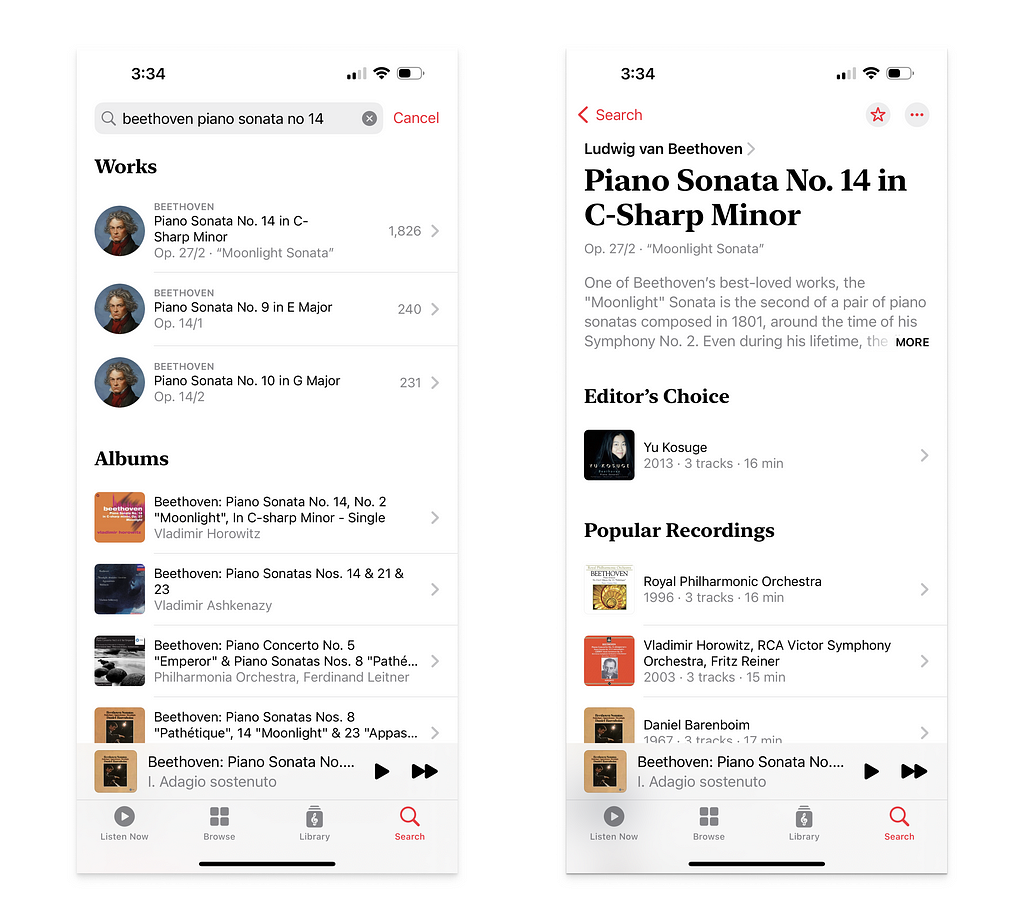
- It has a rich interface that displays all the relevant information about each piece, such as composer, artist, period, key, movement, etc.
- It offers personalized recommendations and Periods and Genres, New Released, Essential Albums, and many more based on your listening history and preferences.
- It’s packed with exclusive content and editorial features from experts and influencers in the classical music world.
- Lastly, it has “The Story of Classical,” a podcast-like series for newer classical music listeners as a guideline.
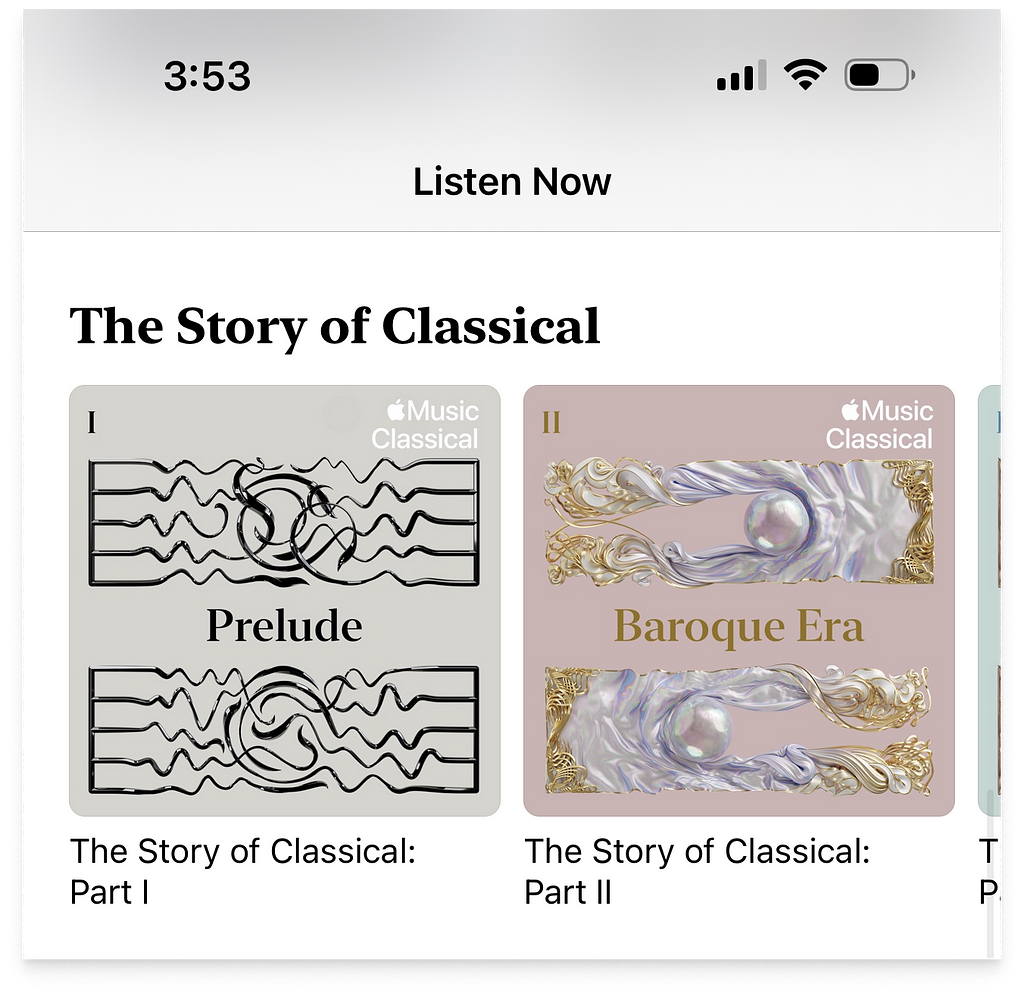
The bridge between the original apple music app and the apple music classical
Some users appreciate separate apps for big genres. Many Spotify users would prefer a separate app for Spotify podcasts.
Apple definitely did its research and took this approach. Nevertheless, it would still be interesting to know what ideas the designers at Apple came up with. Did they try to accommodate the classical music service within the existing app? What kind of prototypes did they make? What was the result of the prototype testing?
These two apps come under the same apple music subscription, meaning users do not have to pay separately for the Apple Music Classical. Even though the classical app is a standalone app, it has some dependency on the main Apple Music app. These two apps work in sync. Here are some steps that Apple took to keep them relevant —
- The app’s UI is similar and consistent, as it should be. The information architecture got a complete overhaul to accommodate all the information in a title of a classical music piece.
- If the user plays a piece of music on the classical app, it appears on the “Recently Played” in the original app. So the titles are available in both apps and can be managed.
- Save in a ‘Playlist,’ ‘Album,’ and ‘Library’ on the classical app; it also appears in the original app. However, the music is downloadable in the actual app only. As you can see on the first screen of the image below, playing the piece on the classical app appears on the original music app under recently played. Also, adding the piece to a playlist on the classical app appears on the original app.
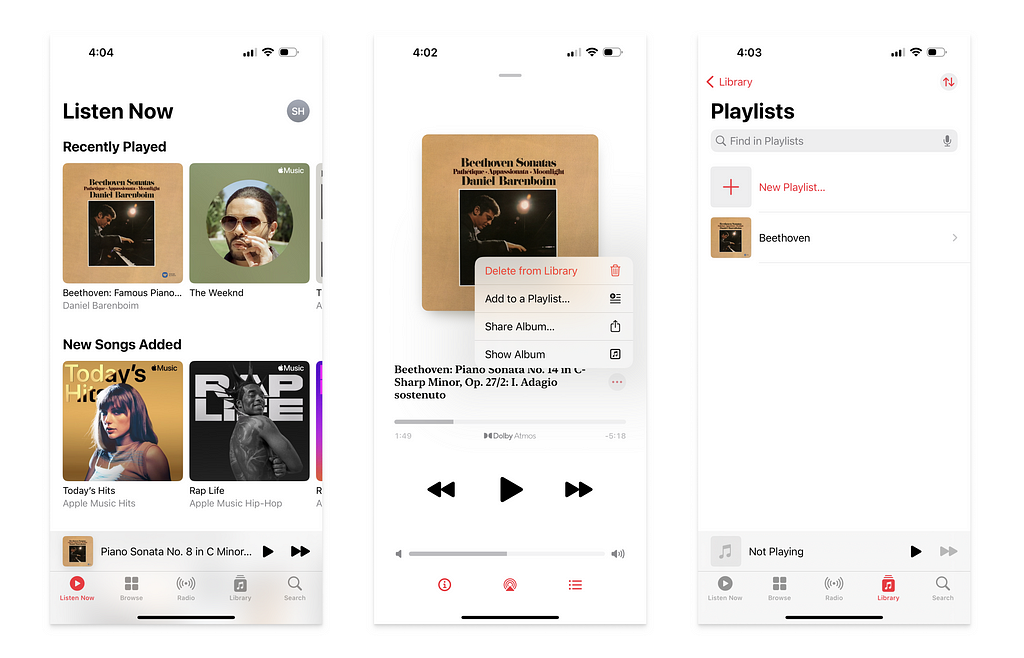
These features allow the user to have a unified music library. Discovered pieces can also be managed and played in the original apple music app.
Conclusion
It’s been a few months since Apple launched the app. So far, the reviews on App Store and Reddit forums are good, especially on how searching and exploring works. It proves that Apple’s approach is valid, and they are on the right track to solve the problem. The app still has a long way to go; however, it was a good start. Time will tell how it performs against competitors like IDAGIO. However, Apple will always have the upper hand because of the already existing user base of Apple Music since the new classical music app comes in the apple music subscription package. Lastly, the most audio streaming service Spotify also may consider such an approach for classical music. It’s wonderful to see that Apple cares for the niche market; it is a great sign of user-centered design.
Thanks for taking the time to read my article!
Got anything to add? Please share your comments below.
If you found this article helpful or thought-provoking and want to stay in touch and see more of my work, feel free to connect with me on LinkedIn. You can also visit my website to learn more about what I do. And if you have any questions or just want to chat, don’t hesitate to shoot me an email at [email protected]. I’d love to hear from you!
From Beethoven to Bach: how Apple’s new app makes classical music discovery a breeze was originally published in UX Collective on Medium, where people are continuing the conversation by highlighting and responding to this story.